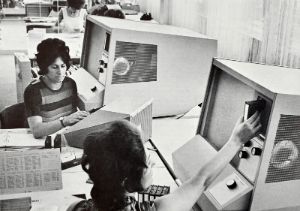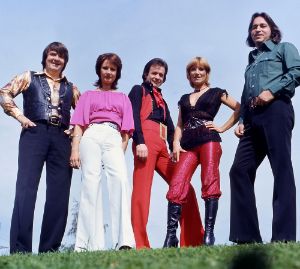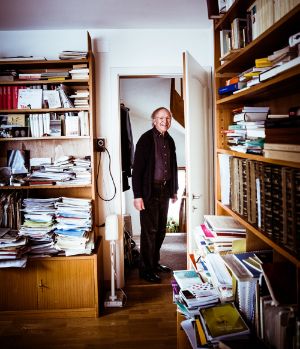SUISA: a short history
SUISA's story starts 140 years ago.
An entertaining journey through time in pictures through the history of Swiss music and SUISA
SUISA past and present
For over 100 years, SUISA has been committed to ensuring that composers, lyricists and publishers of music receive fair remuneration for their work. Since 1923, SUISA has developed in tune with the globally evolving universe of music uses.
1883 – First Swiss copyright legislation
Switzerland’s first Federal Copyright Act (CopA) was introduced 40 years before SUISA was founded. Unlike its neighbours, Switzerland did not yet have a collective administration society. However, since 1876 a branch of SACEM, the French society, had granted French authors in Switzerland the same level of legal protection that they had in France.
Overview of the history of collecting societies (only in German & French)
1900 – Founding of STV
The impetus for the foundation of a collecting society in Switzerland was given by Adrien Lachenal, a music-loving Federal Councillor. On 30 June 1900, the STV - Schweizerische Tonkünstlerverein (association of Swiss sound artists) was founded in Zurich. The STV was not a proper collecting society, but its declared purpose was to create a company for the collective administration of authors’ rights. However, its first commitment was to improving copyright law.
1923 – Founding of MECHANLIZENZ
SUISA’s story truly starts in 1923 with the founding of MECHANLIZENZ, at the time a joint-stock company. The decisive factor behind its creation was the introduction of the copyright act in 1923.
The purpose of MECHANLIZENZ was to licence the production of sound recordings. This did not really mean records, which were still in their infancy in 1923, but music boxes. Music boxes were mainly produced in the area of Yverdon and Sainte-Croix and from there they were exported to the whole world.
1924 – Founding of GEFA
On 6 July 1924, one year after the new copyright act became law and MECHANLIZENZ was established, GEFA, the Swiss society for performance rights, was founded. The society was run by the Swiss association of sound artists (STV) in cooperation with the Swiss society of popular authors, composers, and publishers, the association of Swiss music dealers and publishers, and other groups.
1941 – GEFA becomes SUISA
The new collective administration act of 1941 provided that only one society would be empowered to collectively manage the rights of authors of non-dramatic music, that this society needed State approval, and that it would operate under federal oversight. As a result, GEFA was converted from an association into a cooperative society. And its name was changed to SUISA. The name is a shortening of the words SUISse Auteurs.
SUISA started operation on 1 January 1942 and relocated its headquarters to the former premises of the Rentenanstalt at Mythenquai in Zurich.
1946 – Additional office in West Switzerland
In 1946, SUISA’s Board decided to open a branch in Lausanne for collections and to serve its members in French-speaking Switzerland. The Lausanne branch also incorporated the film department which was responsible for cinema theatres, film producers and television advertisers across Switzerland as a whole.
1958 – Alliance with MECHANLIZENZ
Most members of MECHANLIZENZ were also members of SUISA, and they compared the services offered by the two societies. In 1958, MECHANLIZENZ was attached to SUISA, but both societies retained their legal independence. The full merger came quite a few years later. The merger agreement was approved by the general meetings of the two societies on 14 June 1980.
1965 - CAE directory (composers, authors and publishers)
CISAC, the International Confederation of Societies of Authors and Composers (Confédération Internationale des Sociétés d’Auteurs et Compositeurs) instructed SUISA to prepare a list of all composers, lyricists, and music publishers affiliated with a collective administration society. This is how the CAE directory came into being; it would soon comprise the names of more than one million authors and publishers. Since 1997, the directory has been called the IPI List (Interested Parties Information) and can be accessed online by all rightholders.
1968 - SUISA moves into its own premises
In the post-war years, demand for music soared and more and more music was composed. SUISA’s membership grew three-fold between 1942 and 1960 – over the same period, however, SUISA’s offices merely doubled in size.
Owing to the growth in music consumption and in the number of registered works, SUISA had to install its own EDP facilities. At the time, storage capacity required a huge amount of space. SUISA was therefore obliged to look for new premises.
In 1966, the foundation stone of SUISA’s new building was laid in the presence of the Mayor of Zurich, Sigmund Widmer. SUISA moved into its new premises in Zurich in November 1968.
1989– the first Foundation for Music
In 1987, at SUISA’s General Meeting, the French-Swiss composer and author Michel Bühler presented the concept of a central structure to support “Chanson”. This triggered the foundation, in 1989, of the “SUISA Foundation for Music” –- known today as FONDATION SUISA. It is headquartered in the “Maison de la Musique” in Lausanne. The purpose of Fondation SUISA is to promote music-making in Switzerland and abroad.
The foundation is funded by a contribution of 2.5% of SUISA’s annual domestic broadcasting and performance revenues (from Switzerland and Liechtenstein). FONDATION SUISA awards more than CHF 2.5 million per year in grants to projects, scholarships and other activities.
1999 – CHF 32.3 million in revenues
In 1999, revenues from mechanical rights amounted to CHF 32.3 million. The turn of the century marked the peak in mechanical reproduction. At the same time, it was a turning point: as of the year 2000, remuneration for private copying and income from online uses (downloading and streaming) started replacing the revenues from reproduction rights.
The World Wide Web was not just a passing fad: it upended music distribution altogether.
2002 - Branch in Lugano
In 2002, SUISA opened a branch in Lugano to serve music creators and users in the Ticino and neighbouring northern Italy.
Today, a staff of four employees serves authors, publishers and customers in Italian-speaking Switzerland and neighbouring Italy.
2010 – A postulate leads to the revision of the Copyright Act
In 2010, Géraldine Savary, at the time a member of the Council of States and subsequently a member of SUISA’s Board, submitted the postulate "Does Switzerland need a law against the illegal downloading of music?".
The last revision of the Federal Copyright Act (CopA) was initiated in 2012 as a result of this postulate. The revised CopA came into force on 1 April 2020 – ten years after the postulate. Over this decade, technological progress advanced at the speed of light. Even at the time, music was hardly downloaded anymore, but streamed on online platforms. A further revision will be necessary soon to effectively secure compensation for the use of authors' rights, including by the tech giants (GAFA: Google, Apple, Facebook, Amazon), in the age of artificial intelligence.
2017 – Mint and SUISA Digital: an important step into the future
The principle of territorial rights management does not apply to online music usage. Moreover, online licensing of music usages presupposes that the collective rights management organisations have at its disposal the requisite processes and IT infrastructure. As a result, many organisations –- including the larger ones – started to establish what are known as licensing hubs.
SUISA established Mint Digital Services in joint venture with SESAC Holdings, a US music rights organisation. The company is responsible for the management and accounting of the transnational music licensing business with online providers.
Licensing for international online music platforms is handled via SUISA Digital Licensing, a subsidiary created that same year with its registered office in Liechtenstein. Both Mint and SUISA Digital Licensing offer their services to other collective management organisations and music publishers.
2019 - 100,000 new customers in one fell swoop
The revision of the Swiss Radio and TV Act in 2015 also had an impact on SUISA. Until then, Billag, the Swiss collection agency for radio and TV licence fees, had been responsible for collecting fees for backgound entertainment on SUISA’s behalf from businesses that played music, TV programmes or videos on their premises.
The system was changed based on the revised CopA, and SUISA took over this task again at the beginning of 2019. Thus, in one fell swoop, it was responsible for 100,000 new customers. To master this task, SUISA set up a customer centre staffed with ten new employees.
2023 – SUISA’s centenary
In 2023, SUISA celebrated its centenary with various events: a centenary celebration at the AURA club in Zurich, an anniversary book "Streiflichter auf 100 Jahre Schweizer Musik", the short film series "Louis gets it" and a centenary website. Swiss Post honoured SUISA with a special stamp: Switzerland's first stamp with augmented reality and music.


































